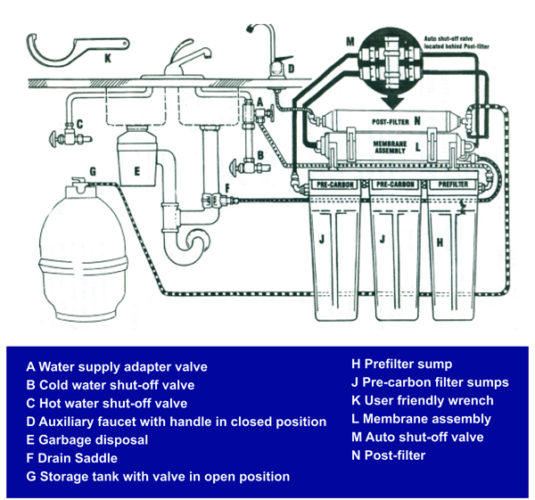
Sometimes known as ultrafiltration due to the passing of water through a membrane, reverse osmosis may be one of the best ways to filter impurities out of water through a RO water system. The membrane has tiny openings that allow only water molecules but not larger compounds though, effectively filtering them out. There are even reverse osmosis membranes that have electrical charges that help with this filtration process. However, all of these membranes used in reverse osmosis require proper maintenance so they will work for a longer period time. A higher end osmosis water system even has automatic membrane flushing systems, which cleans the membrane on it’s own.
As water becomes colder, it also becomes thicker, which allows the membranes in the reverse osmosis systems to pick up more impurities. These membranes are meant to work with water at 77 degrees, with each degree of temperature that the water drops allowing the membrane to pick up 3 percent more impurities in the water itself, also known as the rejection rate. The higher the rejection rate, the better the reverse osmosis unit.
The typical reverse osmosis system that can fit under a kitchen sink and is used for cooking or drinking purposes consists of a number of different parts. Each of these parts is integral to the effectiveness of the overall reverse osmosis system. The typical system includes:
1. Particle Filter
2. Carbon Filter
3. Reverse Osmosis Membrane Unit
4. Pressurized treated-water storage container
5. Carbon absorption post-filter
6. Product Water Faucet
Each of these parts is broken down below:
1. Prefilter: This is also known as the sediment filter and removes small suspended particles to extend the life of the membrane. Some membrane units are hurt by chlorine or bacterial growth, which can lead to them breaking down entirely. If chlorine is present a carbon prefilter may also be recommended.
2. Carbon Filter: The carbon filter reduces chlorine contamination and organic contamination in the tap water. This filter must be changed often so that the reverse osmosis membrane will last as long as possible. Chlorine in the water will quickly cause the membrane to erode.
3. Reverse Osmosis Membrane: There are a wide variety of different reverse osmosis membranes out there and these all effect the type filtration system you have. All have different rejection rates, purifying the water more than others. Of course, the better the membrane, the more expensive it usually is to purchase. There are also membranes that are self-cleaning and membranes that have built-in detection systems, that will let you know if any holes have formed in them.
4. Storage Tank: This supplies two to five gallons of treated water to provide a suitable supply at once and a pressurized flow. Under sink storage requires very little pressure to deliver the water, though other locations may need more pressure which can hurt the membrane.
5. Post-Filter: This filter is merely for taste, so that it tastes like water and removes any extra organics from the water itself.
6. Delivery Tap: A separate tap that isn’t tainted by tap water and only has filtered water flowing through it also included.
There are other options that can also be added onto these reverse osmosis systems like shut-off valves, monitoring gauges and flexible bladders. But these are necessary to the system operating or not, just options that help you to know when the system is working to its optimal performance.